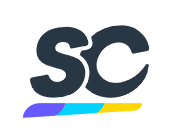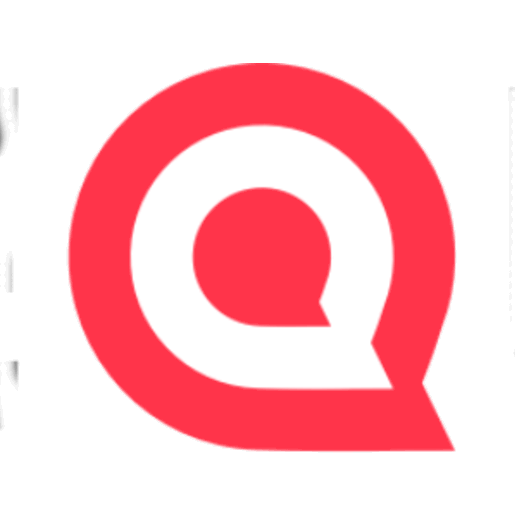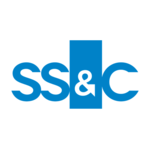Description

SafetyCulture

SeQure - Integrated Workplace
Comprehensive Overview: SafetyCulture vs SeQure - Integrated Workplace
Overview of SafetyCulture and SeQure - Integrated Workplace
a) Primary Functions and Target Markets
SafetyCulture:
SafetyCulture is a technology company known for its flagship product, iAuditor, an inspection app used by various industries to improve safety and operational efficiency. The primary functions of SafetyCulture include:
- Inspections and Audits: Facilitates digital checklists for audits across various sectors such as manufacturing, construction, hospitality, and retail.
- Issue Identification: Allows users to quickly identify and document safety hazards or other issues through photo evidence and detailed reports.
- Real-Time Analytics: Offers analytics tools that help organizations track performance, compliance, and improvement areas.
- Collaboration Tools: Encourages teamwork by enabling sharing and communication around audits and reports.
Target Market: SafetyCulture primarily targets industries with strong regulatory compliance needs, such as construction, manufacturing, hospitality, retail, and logistics. It is particularly useful for safety officers, operations teams, and compliance managers.
SeQure - Integrated Workplace:
SeQure is a platform often used in workplace management to ensure compliance, safety, and security. Its primary features include:
- Workplace Safety and Security: Helps manage safety protocols, emergency responses, and compliance with safety regulations.
- Access Control and Visitor Management: Offers solutions for managing building access and logging visitor details.
- Incident Reporting: Facilitates reporting and tracking of workplace incidents and near-misses.
- Data and Analytics: Provides insights into safety trends and compliance status within an organization.
Target Market: SeQure targets corporate offices, educational institutions, healthcare facilities, and large enterprises that require integrated solutions for safety and security management.
b) Comparison in Terms of Market Share and User Base
SafetyCulture:
- SafetyCulture has a substantial market presence, especially in industries with high safety and compliance needs. It is widely adopted across several countries, boasting a user base of millions of people conducting millions of inspections per year.
- Its simple interface and extensive capabilities for customizing audits and inspections make it highly popular among small to large enterprises.
SeQure - Integrated Workplace:
- SeQure is more specialized and might have a smaller user base compared to SafetyCulture. It is favored by enterprises looking for comprehensive integrated workplace solutions beyond just safety audits.
- Its market share is generally within niches requiring advanced security features, like access control and detailed visitor management.
c) Key Differentiating Factors
-
Functionality:
- SafetyCulture emphasizes inspections, audits, and operational efficiency through a mobile-first approach. It is recognized for its versatile checklist capabilities.
- SeQure provides a broader scope in terms of facility management, with an emphasis on integrating safety protocols with security solutions like access control.
-
Customization and Usability:
- SafetyCulture offers user-friendly customization options for creating various checklists and reports, making it highly adaptable for numerous industries.
- SeQure focuses on integrating different workplace management aspects, which may require more setup but provides a more comprehensive solution for larger organizations with complex needs.
-
Analytics and Reporting:
- Both platforms offer strong analytics features but aim them towards their primary functions. SafetyCulture's analytics are more focused on inspection results and compliance tracking, whereas SeQure provides enhanced insights into safety and security trends.
-
Integration with Other Systems:
- SafetyCulture integrates well with other operational tools and platforms, enhancing its utility in regular business processes.
- SeQure offers robust integration with security systems and other facility management tools, allowing for a holistic approach to workplace management.
In summary, SafetyCulture thrives in environments where high-frequency, detailed inspections and operational safety checks are paramount. In contrast, SeQure provides a comprehensive solution for environments that require a balance between safety management and security protocols. Both have their unique strengths catering to different aspects of workplace safety and management.
Contact Info

Year founded :
2004
+1 816-787-1343
Not Available
Australia
Not Available

Year founded :
Not Available
Not Available
Not Available
Not Available
Not Available
Feature Similarity Breakdown: SafetyCulture, SeQure - Integrated Workplace
As of my last update, SafetyCulture (developers of iAuditor) and SeQure - Integrated Workplace are platforms designed to enhance workplace safety and operations through digital tools and management systems. Here's a breakdown of their features based on available information:
a) Core Features in Common
-
Inspection and Audit Management:
- Both SafetyCulture and SeQure provide robust tools for conducting inspections and audits. Users can create custom checklists, conduct digital inspections, and automatically generate reports.
-
Real-Time Reporting and Analytics:
- Both platforms offer features that allow for real-time reporting, providing insights into safety compliance, potential risks, and performance metrics.
-
Mobile Accessibility:
- Mobile apps are available for both solutions, enabling users to perform inspections, access data, and manage operations remotely from their smartphones or tablets.
-
Task Management:
- Users can assign tasks, set deadlines, and track progress to ensure that action items from inspections and audits are completed on time.
-
Customizable Templates:
- Both platforms allow users to create and customize templates according to the specific needs of their workplace or industry regulations.
b) User Interface Comparison
-
SafetyCulture:
- Typically features a user-friendly and intuitive interface. It focuses on ease of use, allowing users to quickly create and modify checklists and conduct audits with minimal training. The design emphasizes clean visuals and straightforward navigation.
-
SeQure - Integrated Workplace:
- Also designed to be user-friendly but may focus more on integration with other workplace systems and tools. The interface might feature modular designs to cater more significantly to integrated solutions in complex environments.
c) Unique Features
-
SafetyCulture:
- One of the standout features of SafetyCulture is its focus on scalable digital transformation tools for various industries. It offers integrations with other platforms such as Slack and Zapier, allowing for broader functionality across different applications.
- The platform also provides training features and a library of shared checklists and templates contributed by the community that can be tailored to users' specific industry needs.
-
SeQure - Integrated Workplace:
- SeQure might emphasize integration with existing workplace management systems more robustly. Its offerings could include a broader suite of solutions beyond safety and compliance, potentially covering visitor management and space utilization.
- It may focus on full-scale workplace safety and management solutions, offering a more integrated approach with IoT devices or enterprise systems for a more holistic workplace management perspective.
It's important to note that the specific offerings of these platforms can evolve with new updates and releases, so for the most current and detailed feature comparison, checking their respective official websites or contacting their sales teams would provide the latest insights.
Features

Not Available

Not Available
Best Fit Use Cases: SafetyCulture, SeQure - Integrated Workplace
SafetyCulture and SeQure - Integrated Workplace are both platforms designed to enhance safety, compliance, and workplace efficiency, but they cater to different needs within businesses and projects. Here's an outline of the best fit use cases for each:
SafetyCulture
a) Best Fit Use Cases
-
Types of Businesses or Projects:
-
Construction and Manufacturing: SafetyCulture is ideal for industries that require rigorous safety inspections, audits, and compliance reporting. Its features support hazard identification, equipment inspections, and safety audits, essential for construction sites and manufacturing plants.
-
Hospitality: Ensures that hygiene and safety standards are meticulously maintained. Hotels and restaurants can utilize it to conduct regular safety inspections and audits to ensure guest and staff safety.
-
Logistics and Transportation: Companies that manage fleets or logistics can use SafetyCulture to conduct vehicle checks, manage compliance documentation, and ensure driver safety.
-
Retail: Retail businesses benefit from SafetyCulture by managing store audits, ensuring merchandise safety, and maintaining customer safety protocols.
-
d) Industry Verticals and Company Size:
-
Industry Verticals: SafetyCulture serves multiple sectors including hospitality, construction, manufacturing, logistics, and more. Its versatility in creating custom checklists and forms makes it adaptable to various industry standards and regulatory requirements.
-
Company Size: SafetyCulture is scalable and can be implemented in small to large enterprises. Small businesses can leverage its simple interface for basic safety checks, while larger organizations can benefit from its extensive reporting and analytics capabilities.
SeQure - Integrated Workplace
b) Preferred Scenarios
-
Scenarios for Implementation:
-
Corporate Offices: SeQure is suited for organizations looking to manage their office spaces more efficiently. It provides tools for desk booking, visitor management, and space utilization analytics, which are crucial for modern hybrid work environments.
-
Co-working Spaces: With features designed for space management and tenant engagement, SeQure is ideal for co-working spaces seeking to offer flexible booking solutions and community engagement tools.
-
Real Estate Management: SeQure can be used by real estate firms to optimize building operations, engage tenants, and streamline property management activities.
-
Technology Companies: Fast-growing tech firms needing to manage rapid employee scaling can benefit from SeQure's space management and employee experience features.
-
d) Industry Verticals and Company Size:
-
Industry Verticals: SeQure primarily targets corporate real estate, co-working spaces, and facilities management in commercial and large office environments. Its features align with industries that prioritize flexible workspace management and tenant engagement.
-
Company Size: SeQure is generally more suited to medium to large enterprises with complex office space needs. However, it can also be advantageous for smaller companies looking to optimize their use of space and enhance the employee workplace experience.
In summary, SafetyCulture is best suited for industries with a strong focus on safety and compliance, like construction and manufacturing, while SeQure is ideal for organizations managing workspaces and seeking to enhance the employee and tenant experience, such as corporate offices and co-working spaces. Both platforms can scale to meet the needs of various company sizes, offering industry-specific features and tools.
Pricing

Pricing Not Available

Pricing Not Available
Metrics History
Metrics History
Comparing undefined across companies
Conclusion & Final Verdict: SafetyCulture vs SeQure - Integrated Workplace
Conclusion and Final Verdict
When comparing SafetyCulture and SeQure - Integrated Workplace, both products offer robust solutions for workplace safety and operational efficiency. However, the choice of which product offers the best overall value largely depends on the specific needs and priorities of the organization using them.
a) Considering all factors, which product offers the best overall value?
SafetyCulture offers the best overall value for organizations that prioritize ease of use, robust reporting capabilities, and a large library of customizable templates. It is particularly advantageous for companies looking to enhance safety compliance and improve operational processes through user-friendly digital tools.
b) Pros and Cons of Choosing Each Product
SafetyCulture:
-
Pros:
- User-friendly interface that simplifies training and adoption.
- Extensive library of templates for inspections and audits, making customization easy.
- Real-time reporting and analytics to track safety metrics effectively.
- Strong mobile app support, enabling on-the-go accessibility.
-
Cons:
- May involve a steeper learning curve for advanced features.
- Pricing can be higher compared to other similar tools, which may not be ideal for small businesses with limited budgets.
SeQure - Integrated Workplace:
-
Pros:
- Offers comprehensive workplace safety and security solutions.
- Can integrate with other enterprise systems, providing a holistic safety management approach.
- Strong focus on compliance and regulatory requirements.
- Potential cost-effectiveness for larger deployments.
-
Cons:
- May be more complex to implement and require significant customization.
- Could be more suited for larger enterprises, potentially less ideal for smaller organizations.
c) Specific Recommendations for Users Deciding Between SafetyCulture vs SeQure - Integrated Workplace
-
Organization Size and Complexity: Smaller organizations with straightforward needs might benefit more from SafetyCulture due to its user-friendly interface and flexibility. In contrast, larger enterprises with complex compliance requirements might prefer SeQure for its integrated system capabilities.
-
Budget Considerations: If budget constraints are significant, thoroughly compare the pricing structures and determine which product offers the best features for the price.
-
Implementation and Integration Needs: Evaluate the existing systems in your organization. If integration with other enterprise systems is crucial, SeQure might better serve your needs due to its capability to work within larger IT ecosystems.
-
Usability and Training: Organizations with high staff turnover or limited training resources might lean towards SafetyCulture for its ease of use and minimal training requirements.
Ultimately, both products serve different niches effectively. SafetyCulture excels in flexibility and user experience, while SeQure - Integrated Workplace shines in comprehensive safety management for larger, compliance-driven enterprises. Assess your organization's specific needs, resources, and goals to make an informed decision.
Add to compare
Add similar companies



